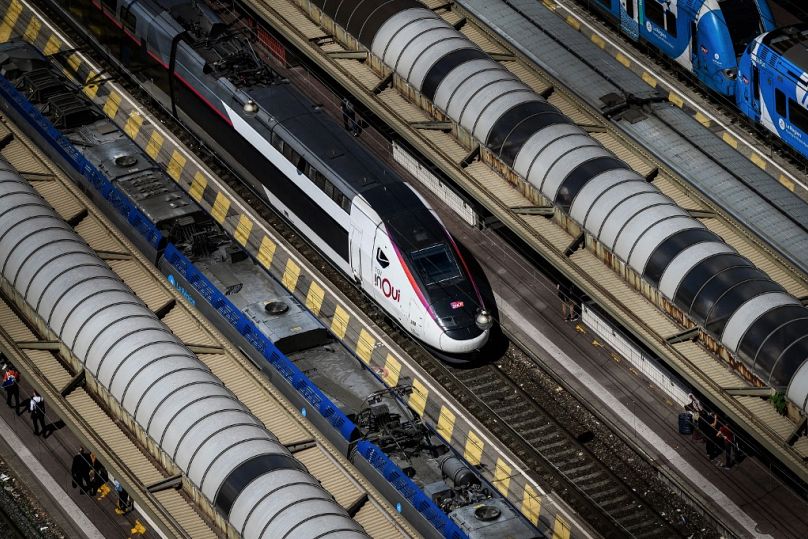With almost half of all journeys under 800km, short-haul flights could provide an avenue to electrifying aviation.
The aviation industry spouts more than 900 million tonnes of CO2 every year - around 3 per cent of all human-induced carbon emissions. Its impact on the planet is only expected to grow as passenger numbers increase.
There’s no ‘silver bullet’ for solving aviation’s emissions problem but one of the avenues being explored to cut greenhouse gases is the development of electric aircraft.
Electrifying your trip halfway across the planet may still be a long way off, but in recent years there has been significant progress on short-haul journeys. Nearly half of all commercial flights are reportedly under 800km meaning there is a lot of potential to reduce CO2 on these short journeys.
Some planes already in development are capable of around 90 minutes of flight on a single charge. And these figures are only set to improve as the technology for these zero-emission vehicles gets better.
Where do airlines begin with electrification?
Some countries are already latching on to this progress and investing in the technology to make electric flights possible. Norway is one such nation, having promised in 2018 to make all short-haul flights leaving its airports electric by 2040.
The country’s unique landscape with soaring mountains and deep fjords means many people rely on flights to get between cities. Around 60 per cent of the trips taken by its 54 million passengers are domestic, and it is a similar situation in most Scandinavian countries.
Sweden and Denmark have also announced plans to make all internal flights fossil fuel free by 2030. Solutions to reaching these targets include hybrid planes, hydrogen engines using fuel generated by renewable energies - and electric aircraft.
But a network of short take-off and landing airports makes Norway an ideal candidate for zero-emissions flights and here electric is the main focus of its technological advancements.
Widerøe, the largest regional airline operating in the Nordic countries, is looking to launch its first electric passenger aircraft as early as 2026. It has teamed up with jet manufacturer Rolls-Royce and electric aircraft manufacturer EVE to make this happen.
Rolls-Royce reiterates that Norway has “unique characteristics that make it the perfect starting point.” It is also a leader in electric transport with more electric cars per person than any other country in Europe and the world’s first electric car and passenger ferry.
But, to make the transition to zero-emissions transport possible, more countries and airlines need to commit. So where else in Europe is an ideal candidate for electrification?
The perfect place for electric flights
The UK seems like an obvious choice for the electrification of short-haul flights. Travelling from London Heathrow to Aberdeen is the longest internal journey at 1 hour and 15 minutes, falling well within the restrictions of the aircraft already in development.
Even some international flights from the UK have the potential to become electric in the near future with Amsterdam and Paris around an hour from the country’s biggest airport.
A study commissioned by electronics distributor Distrelec analysed 100 flights departing from airports in the UK. Based on data from 2019, it estimates that a total of 2.7 million tonnes of CO2 could be saved if the country’s domestic flights went electric.
France is another European country where short-haul flights are currently under the environmental microscope. In April, domestic journeys under 1 hour 30 minutes where passengers can take the train or bus instead are now banned.
But according to Distelec, there are also 36 popular domestic routes that could easily become electrified in the near future. They include flights from Paris Charles de Gaulle Airport to Rennes, Nantes, Lyon, Bordeaux and Marseille.
As the ability to fly these short distances grows, there is increasing scope for European nations to electrify their domestic flights - but only if they choose to invest in the technology to do so.
What about electrifying long-haul flights?
While sights are currently firmly set on electrifying shorter journeys, as the technology develops there is a chance that it can cover longer journeys as well.
According to Juliana Kiraly from Eve Urban Air Mobility, a manufacturer of electric vertical take-off and landing aircraft, everything learned from these smaller vehicles will “help the development of bigger aircraft.”
If countries and their flag-carrying airlines choose to invest in technology to green domestic flights, it only adds to the potential for more ambitious projects in the future.
Instead of choosing to offset carbon emissions, says David Hild, CEO of the Fly Green Fund, airlines should be looking to put this money into green technology like electric flights.
“When we offset, we only pay someone else to improve.”













